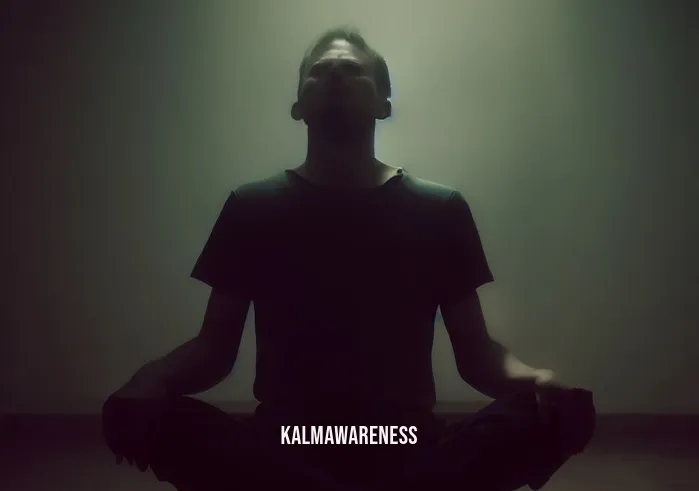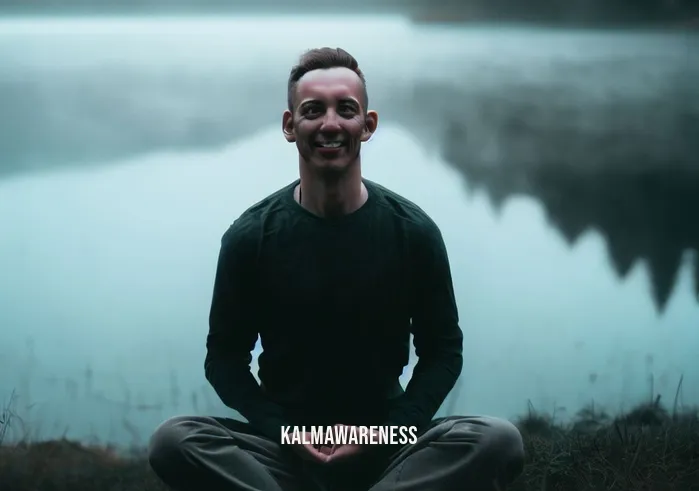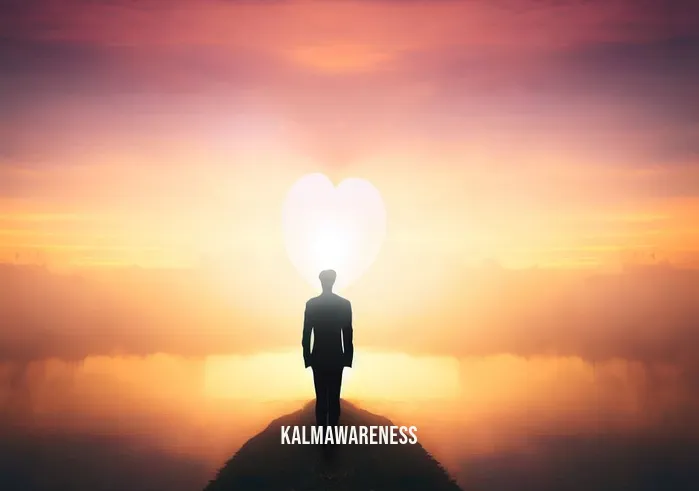Meditation for a Broken Heart: Healing through Mindfulness
Meditation for a broken heart is not just a fleeting concept but a vital practice that roots itself in the ancient art of mindfulness. When we speak of a broken heart, we refer to the profound pain that accompanies loss, disappointment, or tragedy. But as we delve into the vast ocean of meditation, we uncover tools and techniques that offer solace, healing, and rejuvenation. It’s a journey that begins with self-awareness and culminates in self-realization.
The Ancient Roots of Meditation
It’s often said that to understand the future, one must first understand the past. The art of meditation traces its origins back to time immemorial, with practices like Ancient African Meditation Techniques highlighting the deep historical relevance and cultural significance of the process. This ancient knowledge reminds us that humans, throughout history, have sought solace in stillness and introspection, making it a universal remedy.
Modern Adaptations and Variations
Today, meditation has taken various forms. While the traditional practices continue to flourish, newer methodologies like Mindful Muscle and Mindful Martial Arts have emerged, intertwining physical health with mental well-being. These adaptations not only cater to the ever-evolving modern lifestyles but also emphasize the importance of holistic health—mind, body, and spirit.
The Science Behind Meditation
Modern science, too, has lent its voice to the chorus singing praises for meditation. Studies have delved into the brain’s intricate workings during meditation, particularly focusing on areas like the amygdala, known for its role in processing emotions. The insights from Amygdala Healing stand testament to meditation’s transformative power, offering hope to those grappling with emotional turmoil.
Living in the Present
One of the fundamental teachings of meditation is the art of being present. As the wise saying goes, “Life is available only in the present moment”. The pain of a broken heart often stems from clinging to the past or fearing the future. By immersing ourselves in the present, we not only find a refuge from our pain but also discover the beauty that often goes unnoticed.
Tools to Embark on This Journey
As you contemplate starting this journey of healing through meditation, it’s essential to equip yourself with the right tools and knowledge. Whether it’s insightful Meditation Stories for Students or practical guides on Micromeditating, there are a plethora of resources to guide you at every step.
Moreover, for our Spanish readers seeking guidance, Mindful en Español offers tailored content that bridges the gap between language and understanding. It’s a testament to the universality of meditation, proving that healing knows no linguistic boundaries.
In essence, meditation for a broken heart is a beacon of hope in stormy seas. It’s an invitation to turn inwards, to understand oneself deeply, and in the process, find peace and solace. As we continue our exploration in subsequent chapters, we’ll delve deeper into specific techniques, personal testimonies, and more to guide you on this transformative journey.
Remember, the key to healing is not to escape pain but to embrace and understand it. And in this understanding, lies freedom.
Interested in learning more? Dive deeper as we discuss the multifaceted world of meditation and mindfulness in the next segment. Your journey towards emotional intelligence and self-care awaits.

Harnessing Mindfulness: Healing a Broken Heart with Meditation
The journey towards healing is never linear. Each individual charts a unique path, fraught with peaks of clarity and troughs of despair. Yet, amid this tumultuous emotional landscape, meditation emerges as a consistent ally. Meditation for a broken heart isn’t merely about overcoming pain; it’s about transforming this pain into an instrument of personal growth.
Understanding the Mind’s Mechanisms
Often, the pain we experience is magnified by our own habitual thought patterns. By understanding the cycle of Habitual Thinking, we can break free from the shackles of our own mind. Recognizing these patterns is the first step towards changing them.
Techniques to Alleviate Heartache
Meditation offers a variety of techniques tailored for different individuals and their unique struggles. Here are a few that have proven efficacious:
- Mindful Motion: Integrating movement with mindfulness, Meditation in Motion offers a dynamic way to process emotional pain.
- Guided Visualization: The practice of Meditation Pleine Conscience involves visualization to bring about peace and tranquility.
- Breathing Exercises: Central to all meditation techniques, focused breathing can be immensely therapeutic. For instance, consider the profound benefits of Breathing and Meditation.
- Nature Walks: The concept of Mindful Hiking encapsulates the idea of immersing oneself in nature, using the environment to foster inner peace.
Books to Aid Your Journey
Reading can be a source of solace, offering wisdom from those who’ve walked the path before us. For younger readers, Mindfulness Books for Teens can provide age-appropriate guidance. Literature, when combined with meditation, can be a formidable tool in our arsenal against heartache.
How Meditation Techniques Compare
| Technique | Focus Area | Duration | Ideal For |
|---|---|---|---|
| Mindful Motion | Physical Movement & Mental Well-being | 30 mins | Those who find stillness challenging |
| Guided Visualization | Visualization & Inner Peace | 20 mins | Individuals seeking structured meditation |
| Breathing Exercises | Breath Control & Emotional Regulation | 10 mins | Beginners and those with limited time |
| Nature Walks (Mindful Hiking) | Nature & Mindfulness | 1-2 hours | Nature enthusiasts and those seeking escape |
Meditation, when tailored to an individual’s needs, can be incredibly versatile. The table above offers a snapshot of how different techniques cater to varied requirements.
Embracing the Journey
In the throes of heartache, one might question the efficacy of such practices. It’s vital to understand that meditation isn’t a quick fix. It’s a journey. Like Angel Muriel, considered the angel of harmony and balance, meditation seeks to restore equilibrium in our lives, acting as a guide and protector in our most vulnerable moments.
Healing a broken heart requires patience, persistence, and a lot of self-love. Each meditation session, each mindful breath, is a step forward. With time and consistent effort, the clouds of despair will part, revealing the radiant sun of hope and joy.
As we delve further into this realm of healing in our next segment, we’ll explore personal testimonials, deepening our understanding of meditation’s transformative power. Continue reading to immerse yourself in tales of resilience, transformation, and hope.

Embracing Healing: Inspirational Stories of Overcoming Heartbreak through Meditation
The journey of mending a shattered heart is tumultuous. Yet, countless individuals have emerged stronger, their spirits buoyed by the healing touch of meditation. Their tales of resilience and transformation are testimonies to the power of mindfulness and the human spirit’s indomitable will. Meditation for a broken heart isn’t just a practice; it’s an embodiment of hope and renewal.
Stories of Triumph
Alicia’s Rediscovery through Mindful En Español:
After a devastating breakup, Alicia found solace in meditation practices tailored to her Hispanic heritage. Rooted in traditions that resonated with her cultural identity, she felt an unparalleled connection, which significantly hastened her healing process.
Sam’s Journey with Gratitude Yoga in Princeton:
Following the loss of a close friend, Sam chanced upon a unique combination of gratitude practices and yoga. This synergy transformed his grieving process, turning sorrow into gratitude and teaching him to cherish memories without being ensnared by pain.
Maya’s Empowerment through Meditation for Menopause:
Amid the challenges of menopause, compounded by a heart-wrenching divorce, Maya found a tailored meditation technique addressing both her emotional and physiological upheavals. The practice not only offered solace but also empowered her to embrace this new phase of life with grace.
Timeless Quotes that Resonate
Throughout history, many have spoken about the curative powers of meditation, especially when grappling with emotional pain. Here are a few quotes that encapsulate this sentiment:
Thich Nhat Hanh:
“In true meditation, every breath is a rebirth, and every out-breath is a death. But life and death occur in the peaceful space of the present moment.”
Angelina from A Renewed Mind Employee Portal:
“With each meditative breath, I exhale the pain of the past and inhale the promise of tomorrow.”
Eleanor Roosevelt:
“With the new day comes new strength and new thoughts. Meditation amplifies this strength, rooting thoughts in the present.”
A Sage from Mindful Martial Arts:
“Like a warrior, confront your pain with the sword of mindfulness. In the stillness, find your strategy to heal and conquer.”
The Power of Shared Experience
These stories and quotes aren’t mere words but beacons of hope for many navigating the stormy seas of heartbreak. Each tale is a testament to the transformative power of meditation and its unparalleled efficacy in healing emotional scars.
The universality of such experiences underscores a fundamental truth: heartbreak is an inevitable facet of the human experience. However, the path to healing, through practices like meditation, is equally accessible to all.
As we venture ahead, we’ll explore the practical facets of integrating meditation into daily life. In the subsequent chapter, we’ll delve into actionable steps and routines that can be seamlessly incorporated, ensuring that the benefits of meditation aren’t merely theoretical but tangibly experienced. Continue reading to embark on a transformative journey of daily mindfulness practices.

Navigating Heartbreak: Step-by-Step Meditation Techniques
While the journey of healing a wounded heart is deeply personal, there exists a universal toolkit of meditation practices that have proven beneficial for many. In this chapter, we’ll dissect these techniques, offering a step-by-step breakdown of practices specifically curated for those grappling with heartache. Meditation for a broken heart isn’t merely about sitting still; it’s about intentional and informed practices that usher in healing.
Core Principles of Healing Meditation
Intentionality: Begin every session with a clear intent. Understand the reason behind your meditation—whether it’s to seek solace, understand your pain, or cultivate forgiveness.
Presence: As echoed in teachings from Mindful Martial Arts, being fully present is the key. Engage deeply with every breath, every sensation, and every emotion.
Acceptance: Do not judge or resist any feelings that arise. Embrace them, understanding that they are transient.
Consistency: Like any practice, consistency in meditation amplifies its benefits. Dedicate a set time daily to nurture your healing journey.
Meditation Techniques Dissected
Focused Breathing:
- What: Concentrate solely on your breath.
- How:
- Sit comfortably.
- Close your eyes and take a deep breath.
- Focus on the sensation of air entering and leaving your nostrils.
- If your mind wanders, gently bring it back to your breath.
- Benefits: Enhances concentration, reduces anxiety, and promotes emotional balance.
Guided Imagery:
- What: Visualize calming scenarios to bring about inner peace.
- How:
- Choose or create a calming narrative. Platforms like Meditation Stories for Students offer a plethora of options.
- Play the narrative or recall it mentally.
- Immerse yourself in the visualization, engaging all your senses.
- Benefits: Offers respite from distressing thoughts, instills calm, and promotes positivity.
Body Scan:
- What: Mindfully observing sensations throughout the body.
- How:
- Begin at your toes, gradually moving upwards.
- Notice any tension, warmth, or tingling without judgment.
- Visualize tension melting away as you bring awareness to each region.
- Benefits: Promotes relaxation, heightens body awareness, and reduces physical stress.
Tips for Enhancing Your Practice
Environment Matters: Choose a quiet, comfortable space. Consider enhancing it with elements from Mindful- practices, such as soft lighting or soothing sounds.
Regular Scheduling: Dedicate specific times daily for meditation. This consistency helps in establishing a routine.
Journaling Post Meditation: After each session, jot down any insights, feelings, or observations. This can provide clarity over time.
Stay Open-minded: While some techniques might resonate more than others, be open to experimenting. Each individual’s journey is unique.
Embracing the Continual Journey
Heartbreak, as excruciating as it is, can be transformed into an opportunity for profound personal growth. Each meditation session is a step forward, a beacon leading out of the labyrinth of pain. Remember, healing isn’t about erasing pain but about integrating it, understanding it, and ultimately transcending it.
As we move towards the final chapter, we’ll consolidate our learnings, offering a holistic overview and ensuring that every reader is equipped to embark on their personal journey of healing. Continue reading for a comprehensive culmination of our exploration into meditation for a broken heart.

Journey’s End: Reflecting on Meditation’s Power to Mend a Broken Heart
Our expedition into the realm of meditation for a broken heart has been enlightening, replete with insights, techniques, and testimonials that vouch for meditation’s transformative potential. Heartbreak, while a universal experience, affects each person uniquely. Yet, the salve of mindfulness offers solace to one and all, underlining the human spirit’s resilience.
Key Takeaways from Our Journey
Timeless Wisdom: Ancient practices like Ancient African Meditation Techniques remind us that the quest for emotional healing transcends eras and geographies.
Tailored Techniques: Modern adaptations, be it Mindful Muscle or Mindful Hiking, showcase meditation’s versatility in addressing diverse needs.
Inspiring Tales: Stories from real-life warriors like Alicia, Sam, and Maya highlight the tangible benefits of integrating meditation into one’s healing journey.
Empowerment through Knowledge: Understanding the science, as glimpsed through insights on Amygdala Healing, offers a rationale behind meditation’s efficacy.
Applying Your Knowledge
While reading about meditation for a heart in distress provides knowledge, its true power is unlocked when put into practice. Start small—dedicate a few minutes daily to the techniques that resonated most with you. Over time, as you witness its transformative effects, you’ll naturally be inclined to deepen your practice.
A Heartfelt Thank You
To all our dedicated readers, a heartfelt thank you for joining us on this enlightening journey. Your quest for understanding, healing, and growth is commendable, and we’re honored to have been a part of it.
Explore More with Us
The world of meditation is vast, and this exploration was just the tip of the iceberg. Dive deeper into our magazine, where topics like Penn Mindfulness Class await, offering more nuanced perspectives on mindfulness.
Call-to-Action: Hungry for more insights? Discover a world of wisdom and techniques by exploring our Mindful Martial Arts section or revisit previous chapters to solidify your understanding.
Remember, the end of one journey marks the beginning of another. Continue exploring, learning, and growing with us. Here’s to many more enlightening explorations ahead!





